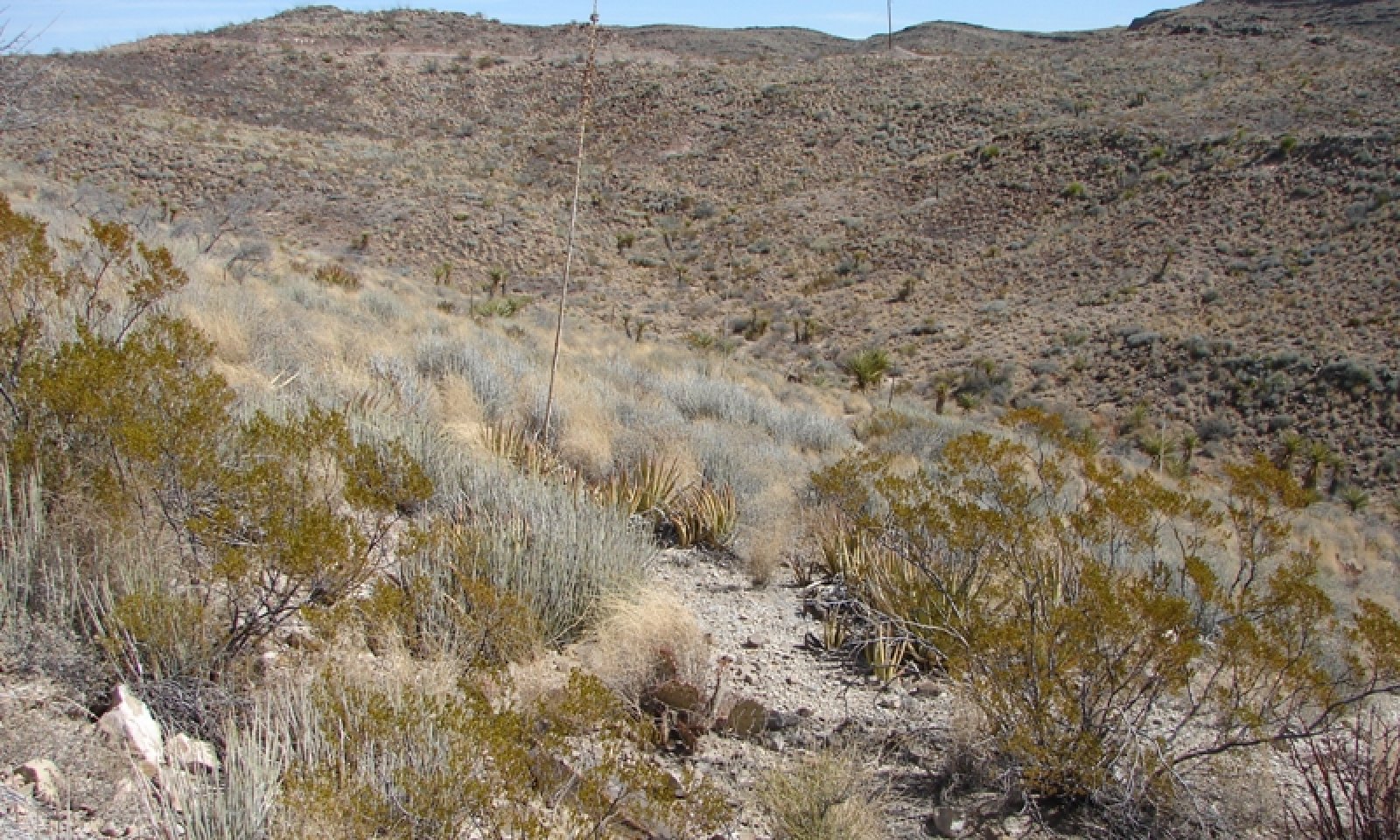

Natural Resources
Conservation Service
Ecological site R042AB737TX
Limestone Hill and Mountain, Hot Desert Shrub
Accessed: 12/21/2025
General information
Provisional. A provisional ecological site description has undergone quality control and quality assurance review. It contains a working state and transition model and enough information to identify the ecological site.
Figure 1. Mapped extent
Areas shown in blue indicate the maximum mapped extent of this ecological site. Other ecological sites likely occur within the highlighted areas. It is also possible for this ecological site to occur outside of highlighted areas if detailed soil survey has not been completed or recently updated.
Classification relationships
International Vegetation Classification:
Bouteloua ramosa Herbaceous Vegetation
Unique Identifier: CEGL004522
Associated sites
| R042AB264TX |
Igneous Hill and Mountain, Hot Desert Shrub Depending on geology, the Igneous Hill & Mountain site can be associated within the same mountain range. |
|---|---|
| R042AB735TX |
Gravelly, Hot Desert Shrub The Gravelly, Hot Desert Shrub site occurs on alluvial fans below the Limestone Hill and Mountain ecological site. |
Similar sites
| R042AB264TX |
Igneous Hill and Mountain, Hot Desert Shrub The Igneous Hill and Mountain Hot Desert Shrub site is similar but is formed from igneous parent material instead of limestone parent material, thereby affection species composition and production. |
|---|
Table 1. Dominant plant species
| Tree |
Not specified |
|---|---|
| Shrub |
Not specified |
| Herbaceous |
Not specified |
Physiographic features
The site occurs on limestone hills and mountains (Quitman and Indio Mountains in Hudspeth County, TX) at elevations of 3000 to 4000 feet. Slopes range from 5 to 65 percent. Surface runoff is low to medium on 5 to 10 percent slopes, medium on 10 to 20 percent slopes and high on 20 to 65 percent slopes. Aspect will influence species composition and production.

Figure 2. Typical pattern of Redlight and associated soils
Table 2. Representative physiographic features
| Landforms |
(1)
Hill
(2) Mountain |
|---|---|
| Flooding frequency | None |
| Ponding frequency | None |
| Elevation | 914 – 1,219 m |
| Slope | 5 – 65% |
| Aspect | N, S |
Climatic features
The average annual precipitation ranges from 10 to 12 inches. Most of the precipitation occurs as widely scattered thunderstorms of high intensity and short duration during the summer. Occasional precipitation occurs as light rainfall during the cool season. Negligible amounts of precipitation falls in the form of sleet or snow.
Mean annual air temperature is 70° F. Daytime temperatures exceeding 100° F are common from May through September. Frost free period ranges from 254 to 295 days.
The average relative humidity in mid-afternoon is about 25 percent. Relative humidity is higher at night, and the average at dawn is about 57 percent. The sun shines 81 percent of the time in summer and 75 percent in winter. The prevailing wind is from the southwest. Average wind speed is highest, around 11 miles per hour, in March and April.
The combination of low rainfall and relative humidity, warm temperatures, and high solar radiation creates a significant moisture deficit. The annual Class-A pan evaporation is approximately 94 inches.
Table 3. Representative climatic features
| Frost-free period (average) | 295 days |
|---|---|
| Freeze-free period (average) | 334 days |
| Precipitation total (average) | 305 mm |
Figure 3. Monthly precipitation range
Figure 4. Monthly average minimum and maximum temperature
Influencing water features
N/A
Soil features
This ecological site consists of soils that are very shallow or shallow to limestone bedrock. These soils formed in residuum and colluvium derived from thick beds of Cretaceous limestone. Depths to bedrock range from 6 to 20 inches. Soil textures include coarse sandy loam, sandy loam, and loam with limestone surface and subsurface fragments ranging from 30 to 70 percent. Textural modifiers include very gravelly and extremely cobbly. Soils are well drained and moderately permeable over very slowly permeable limestone bedrock. The soils are classified as hyperthermic, meaning that the Mean Annual Soil Temperature at a depth of 20 inches or to bedrock is 72 to 78 degrees Farenheit. The Limestone Hill and Mountain, Hot Desert Shrub ecological site is correlated to the Redlight soil component in the following two map units:
Redlight and Terlingua soils and Rock outcrop, 5 to 35 percent slopes.
Redlight and Terlingua soils and Rock outcrop, 35 to 65 percent slopes.
Table 4. Representative soil features
| Parent material |
(1)
Residuum
–
limestone
|
|---|---|
| Surface texture |
(1) Very gravelly coarse sandy loam (2) Extremely cobbly sandy loam (3) Very gravelly loam |
| Family particle size |
(1) Loamy |
| Drainage class | Well drained |
| Permeability class | Very slow |
| Soil depth | 15 – 51 cm |
| Surface fragment cover <=3" | 20 – 45% |
| Surface fragment cover >3" | 10 – 25% |
| Available water capacity (0-101.6cm) |
0 – 2.54 cm |
| Calcium carbonate equivalent (0-101.6cm) |
10 – 40% |
| Electrical conductivity (0-101.6cm) |
0 – 1 mmhos/cm |
| Sodium adsorption ratio (0-101.6cm) |
0 |
| Soil reaction (1:1 water) (0-101.6cm) |
7.9 – 8.4 |
| Subsurface fragment volume <=3" (Depth not specified) |
30 – 40% |
| Subsurface fragment volume >3" (Depth not specified) |
5 – 20% |
Ecological dynamics
State and transition model

More interactive model formats are also available.
View Interactive Models
More interactive model formats are also available.
View Interactive Models
Click on state and transition labels to scroll to the respective text
Ecosystem states
State 1 submodel, plant communities
State 1
Grass/Shrub State
Community 1.1
Chino grama / mixed shrubs

Figure 5. Chino grama / mixed shrubs
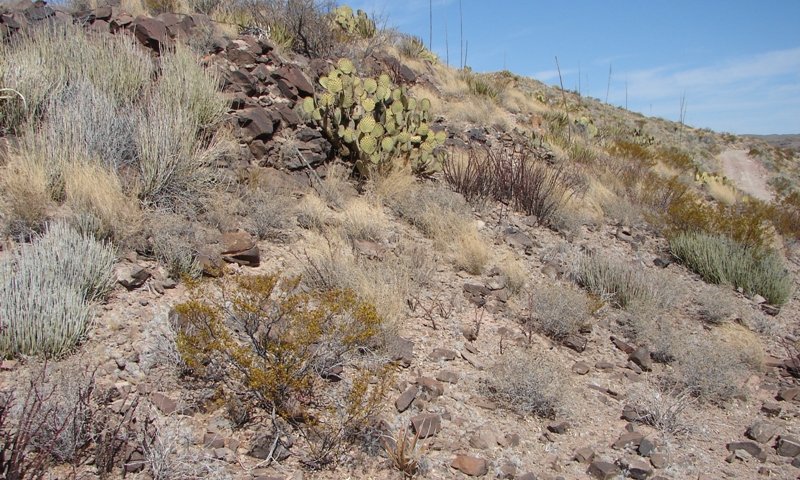
Figure 6. Chino grama / mixed shrubs
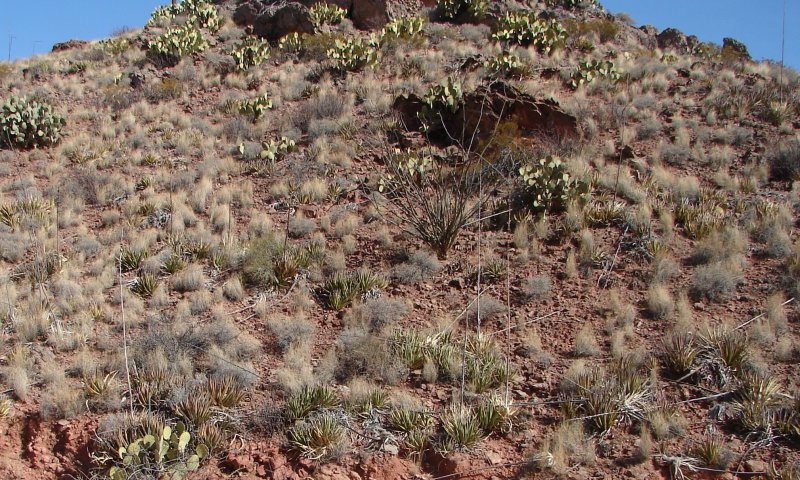
Figure 7. Chino grama / mixed shrubs
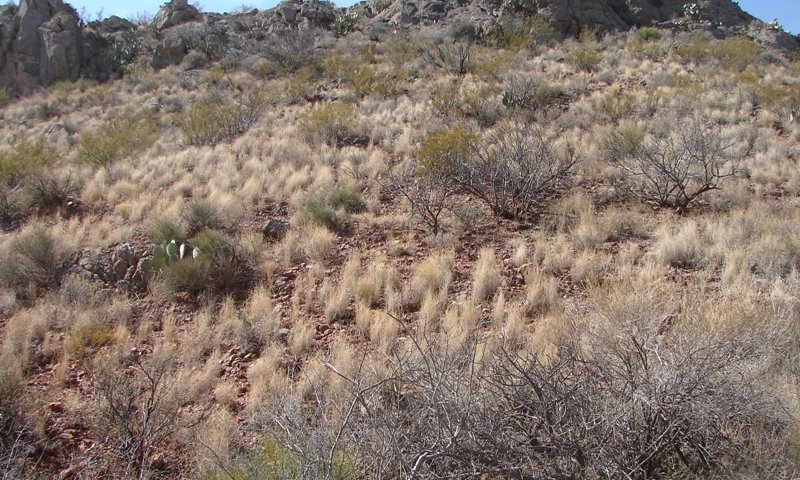
Figure 8. Chino grama / mixed shrubs
Figure 9. Annual production by plant type (representative values) or group (midpoint values)
Table 5. Annual production by plant type
| Plant type | Low (kg/hectare) |
Representative value (kg/hectare) |
High (kg/hectare) |
|---|---|---|---|
| Grass/Grasslike | 275 | 353 | 432 |
| Shrub/Vine | 98 | 126 | 154 |
| Forb | 20 | 26 | 31 |
| Total | 393 | 505 | 617 |
Table 6. Ground cover
| Tree foliar cover | 0% |
|---|---|
| Shrub/vine/liana foliar cover | 10-25% |
| Grass/grasslike foliar cover | 15-35% |
| Forb foliar cover | 1-5% |
| Non-vascular plants | 0% |
| Biological crusts | 0% |
| Litter | 15-25% |
| Surface fragments >0.25" and <=3" | 20-45% |
| Surface fragments >3" | 10-25% |
| Bedrock | 0% |
| Water | 0% |
| Bare ground | 0% |
Table 7. Soil surface cover
| Tree basal cover | 0% |
|---|---|
| Shrub/vine/liana basal cover | 1-3% |
| Grass/grasslike basal cover | 2-6% |
| Forb basal cover | 0-1% |
| Non-vascular plants | 0% |
| Biological crusts | 0% |
| Litter | 15-25% |
| Surface fragments >0.25" and <=3" | 20-45% |
| Surface fragments >3" | 10-25% |
| Bedrock | 0% |
| Water | 0% |
| Bare ground | 2-5% |
Table 8. Canopy structure (% cover)
| Height Above Ground (m) | Tree | Shrub/Vine | Grass/ Grasslike |
Forb |
|---|---|---|---|---|
| <0.15 | – | 1-3% | 1-5% | 1-3% |
| >0.15 <= 0.3 | – | 2-5% | 13-25% | 0-2% |
| >0.3 <= 0.6 | – | 5-10% | 1-5% | – |
| >0.6 <= 1.4 | – | 1-4% | – | – |
| >1.4 <= 4 | – | 1-3% | – | – |
| >4 <= 12 | – | – | – | – |
| >12 <= 24 | – | – | – | – |
| >24 <= 37 | – | – | – | – |
| >37 | – | – | – | – |
Figure 10. Plant community growth curve (percent production by month). TX0011, Grassland/Shrub Community. Grass Dominant with Shrubs Community..
| Jan | Feb | Mar | Apr | May | Jun | Jul | Aug | Sep | Oct | Nov | Dec |
|---|---|---|---|---|---|---|---|---|---|---|---|
| J | F | M | A | M | J | J | A | S | O | N | D |
| 0 | 0 | 0 | 5 | 5 | 10 | 15 | 25 | 25 | 10 | 5 | 0 |
Community 1.2
Fluffgrass - Chino grama / mixed shrubs
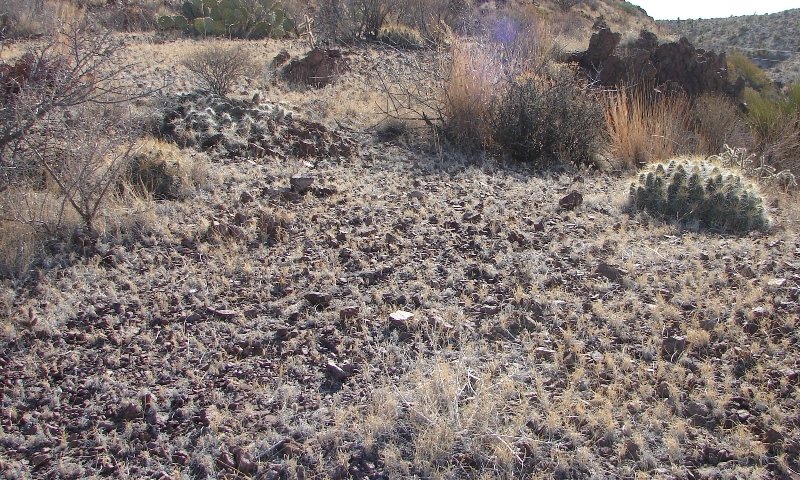
Figure 11. Fluff grass - Chino grama / mixed shrubs
Pathway 1.1A
Community 1.1 to 1.2


Examples of management actions that would reduce herbaceous cover include livestock overgrazing, disturbances along road development, and the harvesting of Chino grama (a practice not seen today).
Pathway 1.2A
Community 1.2 to 1.1


Management actions that would increase herbaceous plant cover would be prescribed or a planned grazing system that includes deferment and favorable rainfall to allow recovery of grasses.
Conservation practices
| Prescribed Grazing |
|---|
Additional community tables
Table 9. Community 1.1 plant community composition
| Group | Common name | Symbol | Scientific name | Annual production (kg/hectare) | Foliar cover (%) | |
|---|---|---|---|---|---|---|
|
Grass/Grasslike
|
||||||
| 1 | Dominant bunchgrass | 179–269 | ||||
| Chino grama | BORA4 | Bouteloua ramosa | 179–269 | – | ||
| 2 | Subdominant bunchgrasses | 56–95 | ||||
| sideoats grama | BOCU | Bouteloua curtipendula | 17–56 | – | ||
| Arizona cottontop | DICA8 | Digitaria californica | 17–56 | – | ||
| slim tridens | TRMU | Tridens muticus | 11–22 | – | ||
| nineawn pappusgrass | ENDE | Enneapogon desvauxii | 6–17 | – | ||
| purple threeawn | ARPU9 | Aristida purpurea | 6–17 | – | ||
| Hall's panicgrass | PAHA | Panicum hallii | 6–17 | – | ||
| hairy woollygrass | ERPI5 | Erioneuron pilosum | 3–11 | – | ||
| 3 | Stoloniferous | 39–67 | ||||
| black grama | BOER4 | Bouteloua eriopoda | 34–56 | – | ||
| false grama | CAER2 | Cathestecum erectum | 0–11 | – | ||
| low woollygrass | DAPU7 | Dasyochloa pulchella | 6–11 | – | ||
|
Forb
|
||||||
| 4 | Perennial forbs | 17–28 | ||||
| Forb, perennial | 2FP | Forb, perennial | 6–11 | – | ||
| croton | CROTO | Croton | 6–11 | – | ||
| beeblossom | GAURA | Gaura | 1–6 | – | ||
| menodora | MENOD | Menodora | 1–6 | – | ||
| globemallow | SPHAE | Sphaeralcea | 1–6 | – | ||
| zinnia | ZINNI | Zinnia | 1–6 | – | ||
| pricklyleaf dogweed | THAC | Thymophylla acerosa | 1–3 | – | ||
| 5 | Annual forbs | 0–6 | ||||
| Forb, annual | 2FA | Forb, annual | 0–6 | – | ||
| bladderpod | LESQU | Lesquerella | 0–1 | – | ||
|
Shrub/Vine
|
||||||
| 6 | Shrubs | 58–75 | ||||
| creosote bush | LATR2 | Larrea tridentata | 17–34 | – | ||
| desert myrtlecroton | BEOB | Bernardia obovata | 11–28 | – | ||
| rough jointfir | EPAS | Ephedra aspera | 11–28 | – | ||
| ocotillo | FOSP2 | Fouquieria splendens | 11–28 | – | ||
| Big Bend barometerbush | LEMI4 | Leucophyllum minus | 6–17 | – | ||
| mariola | PAIN2 | Parthenium incanum | 6–17 | – | ||
| western honey mesquite | PRGLT | Prosopis glandulosa var. torreyana | 0–11 | – | ||
| whitethorn acacia | ACCO2 | Acacia constricta | 6–11 | – | ||
| 7 | Subshrub | 17–34 | ||||
| plumed crinklemat | TIGR | Tiquilia greggii | 6–17 | – | ||
| littleleaf ratany | KRER | Krameria erecta | 6–17 | – | ||
| featherplume | DAFO | Dalea formosa | 3–11 | – | ||
| woody crinklemat | TICAC | Tiquilia canescens var. canescens | 2–8 | – | ||
| 8 | Succulent/fibrous | 22–45 | ||||
| Torrey's yucca | YUTO | Yucca torreyi | 6–34 | – | ||
| lechuguilla | AGLE | Agave lechuguilla | 6–34 | – | ||
| tree cholla | CYIMI | Cylindropuntia imbricata var. imbricata | 6–34 | – | ||
| green sotol | DALE2 | Dasylirion leiophyllum | 6–34 | – | ||
| candelilla | EUAN3 | Euphorbia antisyphilitica | 6–34 | – | ||
| leatherstem | JADI | Jatropha dioica | 6–17 | – | ||
| blind pricklypear | OPRU3 | Opuntia rufida | 6–17 | – | ||
| pricklypear | OPUNT | Opuntia | 6–17 | – | ||
| spiny hedgehog cactus | ECDA | Echinocereus dasyacanthus | 1–3 | – | ||
Interpretations
Recreational uses
Hiking and mule deer hunting are popular recreational uses.
Wood products
N/A
Other products
N/A
Supporting information
Contributors
Michael Margo
Michael Margo, RMS, NRCS, Marfa, TX
NRCS Unknown
Rangeland health reference sheet
Interpreting Indicators of Rangeland Health is a qualitative assessment protocol used to determine ecosystem condition based on benchmark characteristics described in the Reference Sheet. A suite of 17 (or more) indicators are typically considered in an assessment. The ecological site(s) representative of an assessment location must be known prior to applying the protocol and must be verified based on soils and climate. Current plant community cannot be used to identify the ecological site.
| Author(s)/participant(s) | Michael Margo, RMS, NRCS, Marfa, TX |
|---|---|
| Contact for lead author | Zone RMS, San Angelo, TX 325-944-0147 |
| Date | 04/16/2012 |
| Approved by | |
| Approval date | |
| Composition (Indicators 10 and 12) based on | Annual Production |
Indicators
-
Number and extent of rills:
None -
Presence of water flow patterns:
None, except following high intesity storms, when short (less than 1 m) and discontinuous flow patterns may appear. Flow patterns in drainages are linear and continuous. -
Number and height of erosional pedestals or terracettes:
None -
Bare ground from Ecological Site Description or other studies (rock, litter, lichen, moss, plant canopy are not bare ground):
2-5% bare ground -
Number of gullies and erosion associated with gullies:
None -
Extent of wind scoured, blowouts and/or depositional areas:
None -
Amount of litter movement (describe size and distance expected to travel):
In drainages, there can be significant amounts of litter moved long distances. On most of the site, minimal and short distance (<5ft) of litter movement associated with high intense rainfall.
-
Soil surface (top few mm) resistance to erosion (stability values are averages - most sites will show a range of values):
Soil stability values usually ranging from 4-6 under vegetation and 2-3 in the interspaces
-
Soil surface structure and SOM content (include type of structure and A-horizon color and thickness):
Up to 7 inches thick, pale brown surface horizon with a weak fine granular structure. Data from Redlight soil series description.
-
Effect of community phase composition (relative proportion of different functional groups) and spatial distribution on infiltration and runoff:
A high canopy cover of midgrass bunch and stoliniferous grasses will help minimize runoff and maximize infiltration. Grasses should comprise approximately 75% of total plant compostion by weight. Shrubs and forbs will comprise about 15% and 10%, respectively, by weight.
-
Presence and thickness of compaction layer (usually none; describe soil profile features which may be mistaken for compaction on this site):
None -
Functional/Structural Groups (list in order of descending dominance by above-ground annual-production or live foliar cover using symbols: >>, >, = to indicate much greater than, greater than, and equal to):
Dominant:
Mid bunchgrass (Chino grama)Sub-dominant:
Short stoloniferous grasses > shrubsOther:
Mid/short bunchgrasses > fibrous/succulents = perennial forbs > annual forbs/grassesAdditional:
-
Amount of plant mortality and decadence (include which functional groups are expected to show mortality or decadence):
All grasses will show some mortality and decadence in addition to annual forbs. Mid/tall perennial shrubs will show some mortality or decadence only after prolonged and severe droughts. Subshrubs will be less resistant to severe droughts than mid/tall perennial shrubs.
-
Average percent litter cover (%) and depth ( in):
-
Expected annual annual-production (this is TOTAL above-ground annual-production, not just forage annual-production):
350-550 lbs/ac -
Potential invasive (including noxious) species (native and non-native). List species which BOTH characterize degraded states and have the potential to become a dominant or co-dominant species on the ecological site if their future establishment and growth is not actively controlled by management interventions. Species that become dominant for only one to several years (e.g., short-term response to drought or wildfire) are not invasive plants. Note that unlike other indicators, we are describing what is NOT expected in the reference state for the ecological site:
None -
Perennial plant reproductive capability:
All species should be capable of reproducing.
Print Options
Sections
Font
Other
The Ecosystem Dynamics Interpretive Tool is an information system framework developed by the USDA-ARS Jornada Experimental Range, USDA Natural Resources Conservation Service, and New Mexico State University.
Click on box and path labels to scroll to the respective text.